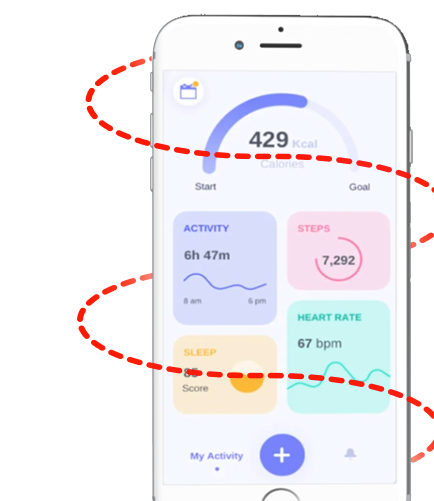Patient data, including biometrics, symptoms, effects of medicine, and level of activity are traditionally collected during annual physicals or sporadically scheduled exams. The data measures only a fraction of the patient experience, ignoring the data-rich history of their day-to-day lives. It strays towards reporting, rather than 360-degree analytical insights.
The next generation of healthcare will not only rely on provider-generated health data.
The vast majority of patients cannot afford a full-time doctor to track their healthcare data on a daily basis. However, providers can take advantage of the tools the average consumer is already using. In a world where 694,000 gigabytes of data is created every minute, it’s no wonder why patient generated health data (PGHD) is the next big thing.
Using the “Smarts” of Smart Devices to Your Advantage
There are two categories of devices that deliver PGHD:
- Medical Devices
These are intended to diagnose disease and typically assigned a Class I – Class III designation by the FDA. - Wellness Products
Smart phones, watches, sleep tracking apps, and fitness trackers. These are not currently regulated by the FDA.
And why not meet a captive audience where they’re at? The explosion of access to mobile and wearable technology has created a health movement called the “Quantified Self,1 a community devoted to “self-knowledge through numbers.” Evidence-based, informed decisions are in vogue, and populations seem willing to participate as stakeholders in their own healthcare.
According to Gartner, the wearable market will increase to 500 million devices in 2021.2 Furthermore, an HealthIT.gov report discovered that consumers actually want to use technology for health-related purposes – 40% of smartphone users had a health or wellness app, and 33% owned a FitBit, blood pressure monitor, or glucose monitor.3
Every medical device, from consumer-level fitness trackers and mobile apps, to class III devices like pacemakers, represents an opportunity for providers to create a patient-centered experience with less effort. And, legislation like the 21st Century Cures Act is creating an opportunity for a modern electronic sharing infrastructure that respects security and patient privacy.
It’s also demonstrated that making the patient an active stakeholder in their healthcare improves health literacy. A survey of patients enrolled in a Connected Cardiac Care Program concluded that 98% learned about heart failure, and 85% felt more in control of their healthcare outcomes.4
Other health related uses of data are promising3:

To summarize the benefits, patient generated health data:
- Improves healthcare outcomes
- Improves patient experiences
- Increases the possibility of early detection1
Yet, the full potential of patient generated health data is not being captured by providers – only 18% of patients reported that they’ve shared data with their health provider.3 How do we bridge the gap between consumers who are willing to use their devices for health, and those who have yet to understand the benefits of sharing it?
Consider the Barriers to Patient Generated Data
Despite the benefits, there are a number of barriers to PGHD on both the patient and provider side.
Patient side
- Concerns over security and privacy
- Low technical literacy
- Lack of access to devices for financial reasons
Provider side
- Limited technical infrastructure
- No ability to gather sources of data
- Concerns of impact to existing technology systems
- Cost of devices
- Inability to handle large volumes of data
- Security concerns
- Inadequate staff for training employees and patients
Overcoming the Barriers
-
Define an executive sponsor at the outset, and assemble a cross-department core planning team
This will ensure that the project has a key stakeholder and that the entire organization is involved.
-
Ensure there is a procedure to address patient problems
Understand the medical devices you provide and establish a workflow to ensure patient’s questions are answered promptly. Consider a platform like Salesforce Service Cloud.
-
Build a place for patients to interact and securely ask questions.
Good marketing is just good communication. Build a portal where your patients can ask questions, take surveys, submit support requests, and schedule appointments. A good place to start is Salesforce Community Cloud.
-
Ensure you have a communication strategy and platform.
Good communication starts with a system capable of reaching your patients over channels they already use – think SMS texting, social media, email, and more. Systems like Marketing Cloud are great for enabling these consumer conversations.
-
Implement a system that allows you to communicate with your patients on a one-on-one basis.
Encourage good behavior based on the data you’re getting, market the benefits of patient generated health data, make recommendations, and make sure they’re engaged. At Penrod, we consider Marketing Cloud to be the ideal platform.
-
Build your information technology infrastructure in accordance with the Office of the National Coordinator for Health Information Technology (ONC).
ONC certification regulates a variety of healthcare IT categories, including electronic data exchange, clinical processes, quality measurements, public health, and more. Not only will this ensure that your patients can safely send and access their information, but also ensures that your business processes will run more smoothly.
With the right tools, patient-generated health data will transform your healthcare practice into a customer-centric operation.


